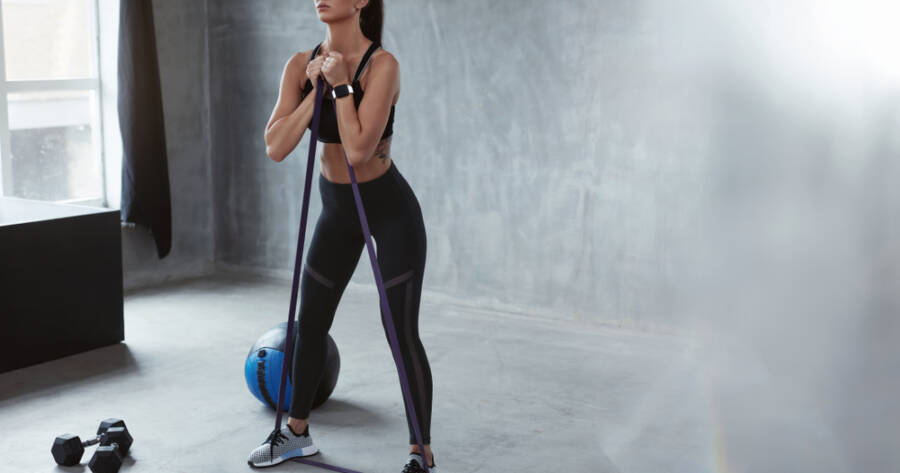Strength training doesn’t require a gym membership or heavy equipment. Resistance bands offer a simple, affordable, and highly effective way to build muscle, improve flexibility, and increase endurance—all from the comfort of home. Lightweight and versatile, they can be used for a variety of exercises that target every major muscle group. Whether you’re new to strength training or looking to add variety to your workouts, resistance bands can help you achieve your fitness goals without taking up much space.
Why Resistance Bands Work
Resistance bands create tension throughout a movement, challenging muscles in a way that free weights sometimes cannot. Because the resistance increases as the band stretches, your muscles work harder at the end of the movement, helping improve strength and stability.
They’re also gentle on joints, making them a good option for people recovering from injuries or those who want to reduce stress on their bodies. Bands come in different levels of resistance, allowing you to gradually increase intensity as your strength improves.
Types of Resistance Bands
There are several styles of resistance bands, each suited for different exercises. Loop bands, often called mini bands, are small and circular, perfect for lower body workouts like glute bridges or lateral walks. Long flat bands can be used for full-body stretching, assisted pull-ups, or strength moves like chest presses.
Tube bands with handles offer a familiar grip for exercises that mimic dumbbell training, such as bicep curls or rows. Having a variety of bands allows you to adapt your routine and target muscles more effectively.
Setting Up for Success at Home
You don’t need much space to train with resistance bands, but a clear area is important for safe movement. A yoga mat can provide extra grip and comfort. Bands can be anchored to a sturdy door, heavy furniture, or even wrapped around a post for certain exercises.
It’s important to check your bands for wear and tear before each session to avoid snapping. Keeping them stored away from direct sunlight and heat will help them last longer and maintain their elasticity.
Full-Body Workouts with Resistance Bands
Resistance bands can target every part of the body. For the upper body, try shoulder presses, chest flies, and triceps extensions. Lower body exercises include squats, lunges, and hip thrusts with added resistance for greater challenge.
Core exercises like seated twists, standing rotations, and plank band pulls can help build stability. The versatility of resistance bands means you can perform strength training, stretching, and even mobility exercises within the same workout session.
Benefits Beyond Strength
Using resistance bands offers benefits beyond muscle building. They’re portable, making them easy to take on trips or to outdoor workouts. Because they’re low-impact, they’re ideal for older adults or anyone managing joint concerns.
Resistance band training also improves coordination and balance, as the instability they create requires the body to engage multiple muscle groups at once. This functional strength can translate into better performance in daily activities and other forms of exercise.
Avoiding Common Mistakes
While resistance bands are beginner-friendly, form still matters. Using a band that’s too light may not provide enough challenge, while one that’s too heavy can compromise your form. Movements should be slow and controlled, with attention to keeping tension in the band throughout the exercise.
Avoid letting the band snap back quickly, as this reduces effectiveness and increases risk of injury. Consistency is also key—using bands a couple of times a week will yield better results than sporadic workouts.
Simple, Effective, and Accessible
Resistance bands are proof that you don’t need complicated equipment to get a great workout. They’re affordable, space-saving, and adaptable for all fitness levels, making them an excellent choice for at-home strength training.
By incorporating a variety of exercises, maintaining proper form, and gradually increasing resistance, you can build strength, improve flexibility, and enhance overall fitness. Whether you use them as your primary training tool or as a supplement to other workouts, resistance bands can help you stay strong and active anywhere.

